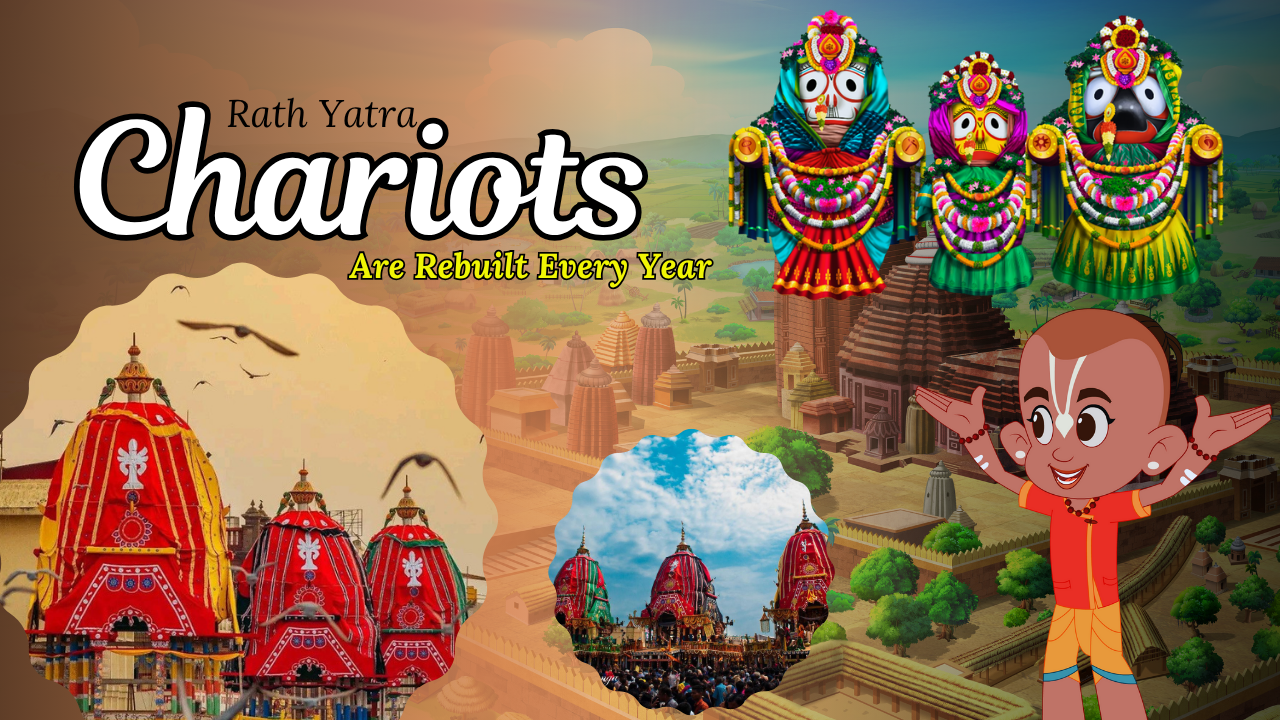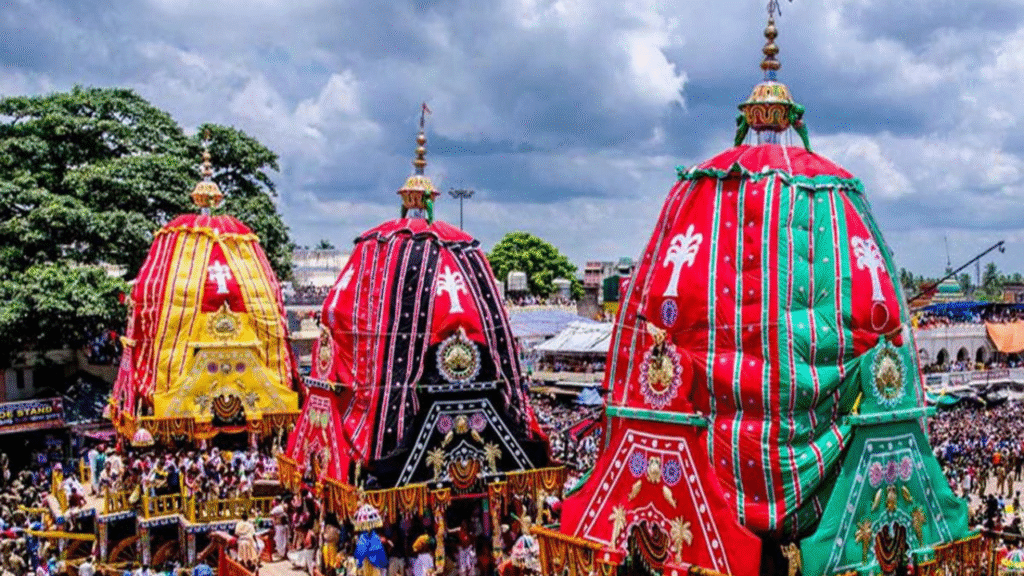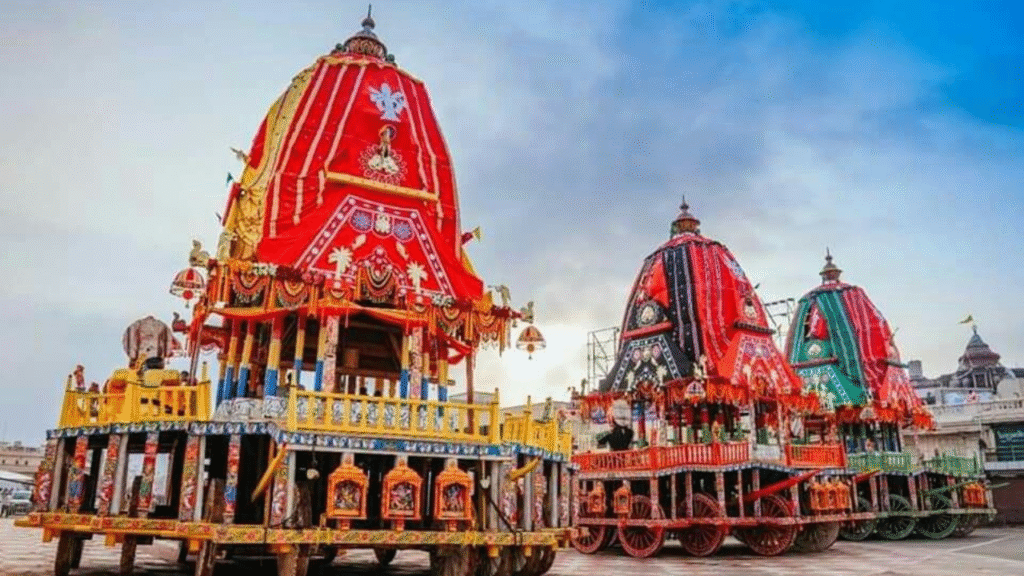
Rath Yatra Chariots Are Rebuilt Every Year – Not Reused?
Rath Yatra Chariot. In the sacred town of Puri, where time bows before tradition and devotion breathes through every ritual, there unfolds a divine engineering marvel each year—the construction of the three mighty chariots for Lord Jagannath, Balabhadra, and Subhadra.
Despite being used for just a few days during Rath Yatra, these grand wooden chariots are never reused. Instead, they are painstakingly rebuilt every year from scratch. Why? The answer lies deep within the spiritual, cultural, and symbolic fabric of Jagannath consciousness.
Sacred Wood, Sacred Purpose
The chariots are built using specific types of sacred wood—Phassi, Dhaura, Simili, and Ashwatha—harvested from designated forests after a ceremonial search called “Banajaga Yatra”. This wood is considered alive and holy, chosen through divination by temple servitors.
These trees are believed to embody divine energy, and once their purpose (to carry the deities) is fulfilled, the chariot too has fulfilled its dharma. Reusing it would break that sacred cycle.

Chariots as Living Beings, Not Objects
In Jagannath culture, the chariots are not lifeless vehicles. They are treated as living, breathing manifestations of the Lord’s will—each with a name, personality, and spiritual symbolism:
-
Nandighosa – Chariot of Lord Jagannath (16 wheels)
-
Taladhwaja – Chariot of Lord Balabhadra (14 wheels)
-
Darpadalana – Chariot of Devi Subhadra (12 wheels)
Each of these is constructed to exact traditional measurements passed down for centuries. To reuse the chariots would be akin to reusing the Lord’s physical form—a spiritual violation.
A Lesson in Impermanence and Humility
Just as the Jagannath idols are replaced during Nabakalebara, the yearly rebuilding of the chariots symbolizes impermanence—a core tenet of Sanatan Dharma.
It teaches devotees:
Nothing in this world is permanent—not even a chariot carrying the Supreme Lord. Life too is a continuous cycle of creation, service, and surrender.
A Tradition of Seva (Selfless Service)
Hundreds of Maharana (carpenter) families, many of whom have served for generations, work on these chariots using only traditional tools—no nails, no metal, no modern machines. Every piece is tied, pegged, and balanced using age-old techniques.
This is not just craftsmanship—it’s a yagna of devotion, a labor of love offered without expectation. No branding, no signatures—only pure service to the Lord.
What Happens to the Old Chariots?
After the Yatra, the chariots remain near the Gundicha Temple for a few weeks. Later, they are dismantled, and the wood is:
-
Used in temple kitchens (for making Mahaprasad)
-
Crafted into small sacred objects or furniture
-
In some cases, offered into ritual fire ceremonies
This repurposing is done respectfully, ensuring the wood never enters commercial use. It remains within the divine ecosystem.
Symbolism of Rebuilding – A Mirror to Human Life
Rebuilding the chariots annually is also a cosmic reminder to all:
-
Rebuild your faith, your values, your inner temple.
-
Don’t rely on past efforts—start fresh every year.
-
Even the Lord sets out anew each time. Why shouldn’t we?
The chariots symbolize our own bodies, and the journey of the Lord reflects the soul’s journey. Just as the chariots wear out, so do we—and like them, we too must constantly renew ourselves with devotion.

A Tradition Rooted in Divine Will
According to legend, it was Lord Jagannath Himself who instructed that new chariots must be made every year. This divine command, passed down through the temple scriptures and servitors, is followed without question.
For devotees, this is not merely a rule—it is a leela (divine play). Every hammer strike, every wood shaving, every knot tied on the chariot—becomes part of a cosmic performance offered to the Lord.
More Than Wood and Wheels
The annual rebuilding of the Rath Yatra chariots is a powerful symbol of devotion, humility, tradition, and cosmic truth. In a modern world that seeks permanence and profit, Puri teaches us:
“Even God doesn’t ride the same chariot twice. What makes you think you should cling to the past?”
Every year, as the massive wheels roll through the streets of Puri, they carry not just the Lord—but centuries of faith, millions of hopes, and the eternal rhythm of creation and surrender.
Jay Jagannath!


Leave a reply here
Your email address will not be published. Required fields are marked *